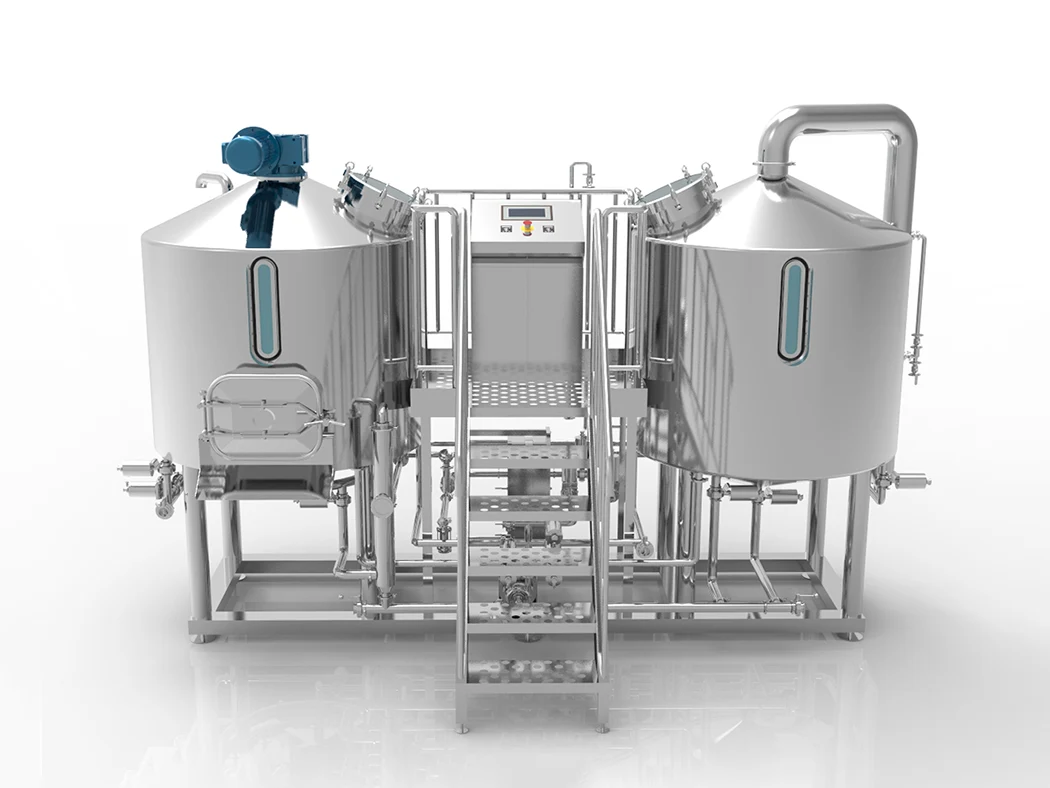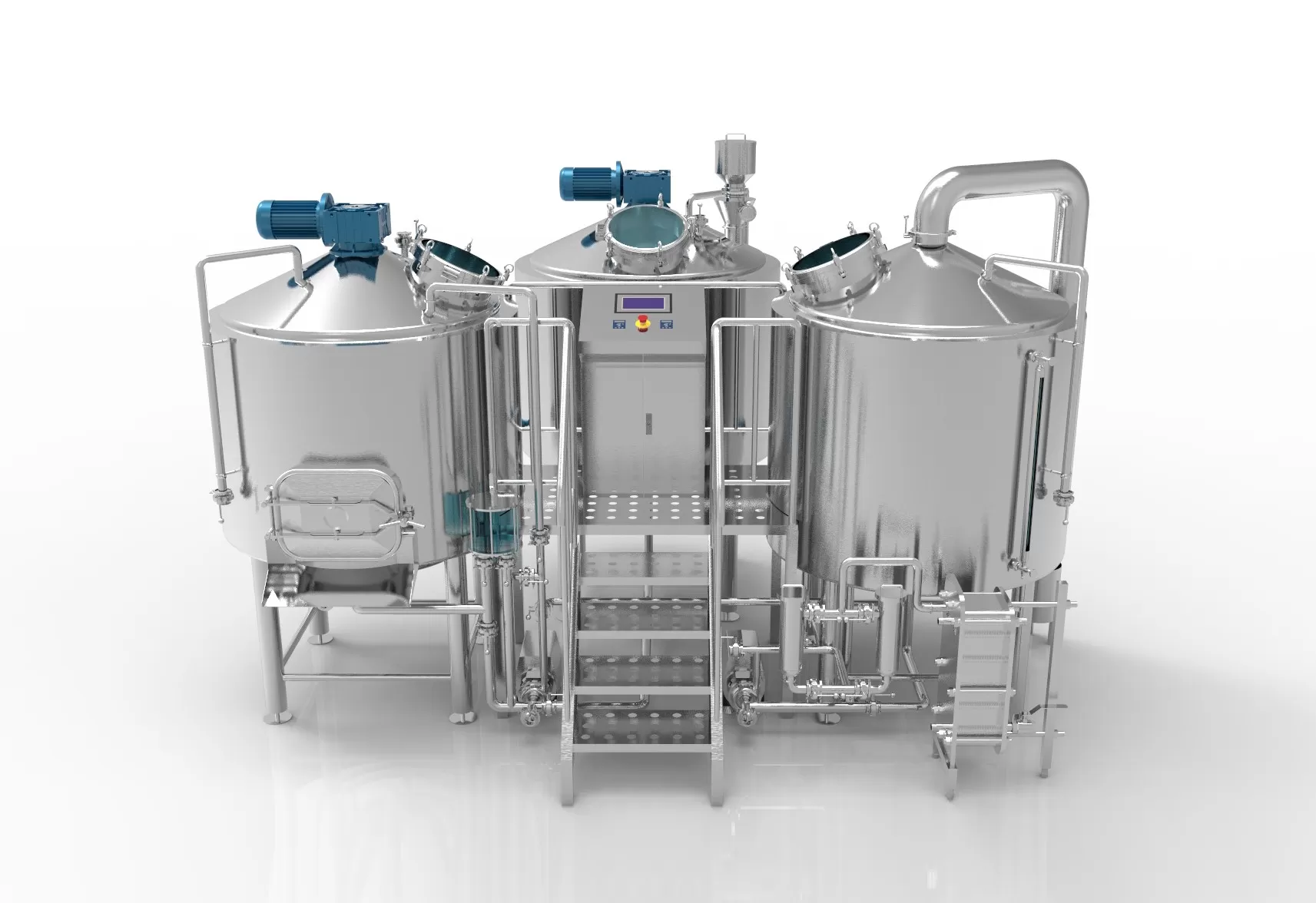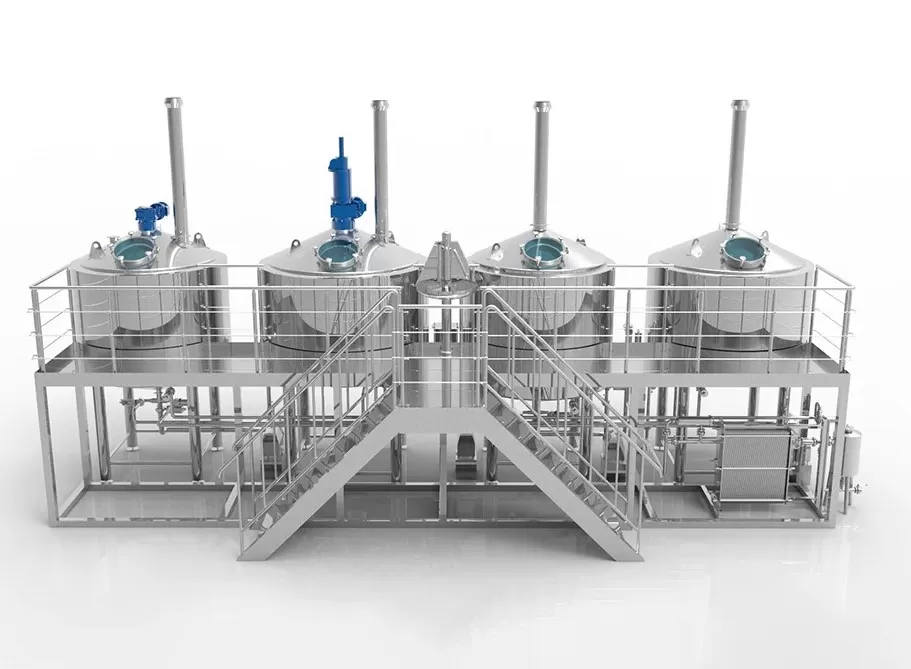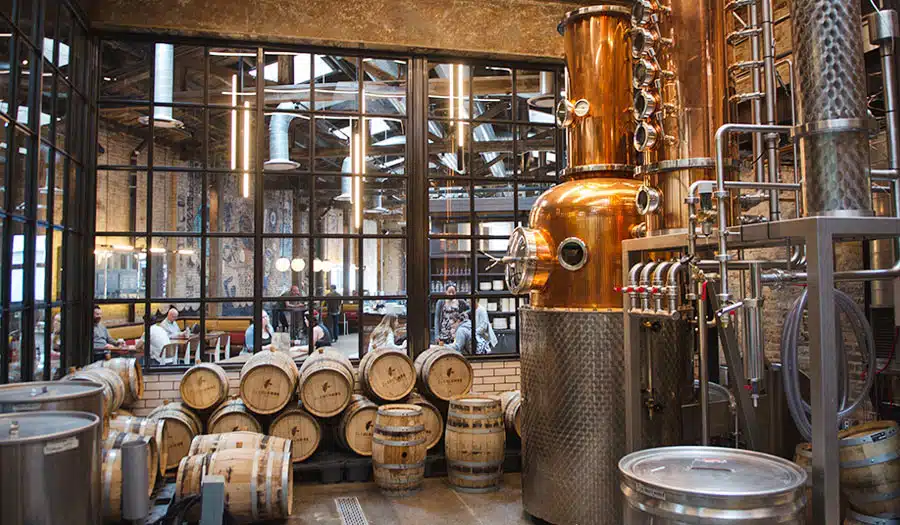Molti birrai e produttori artigianali faticano a scalare le loro attività a causa di attrezzature obsolete, di una flessibilità produttiva limitata o della mancanza di un fornitore affidabile. Senza gli strumenti giusti, anche le ricette di alta qualità possono non soddisfare le aspettative del mercato.
Le attrezzature per distillerie di birra comprendono i macchinari per la produzione di birra e distillazione utilizzati per produrre birra, whisky e altre bevande artigianali. Si tratta di sistemi di produzione di birra, fermentatori, alambicchi, mash tun e unità di controllo della temperatura progettati per la produzione di piccoli lotti e per quella commerciale.
Che cos'è l'attrezzatura per la distillazione della birra?
Le attrezzature per la distilleria di birra si riferiscono ai macchinari integrati utilizzati per la produzione di birra. produzione di birra e distillazione di birra e alcolici. Questo include un'ampia gamma di componenti, da tunnel di mash E fermentatori a alambicchi di pentole, bollitorie sistemi di controllo che consentono una precisa regolazione della temperatura e del flusso del fluido. Sia che si tratti di un birreria, microbirrificioo un ibrido allestimento per la birra e la distillazioneavere le attrezzature giuste è fondamentale per produrre birra di qualità o spiriti come whisky.
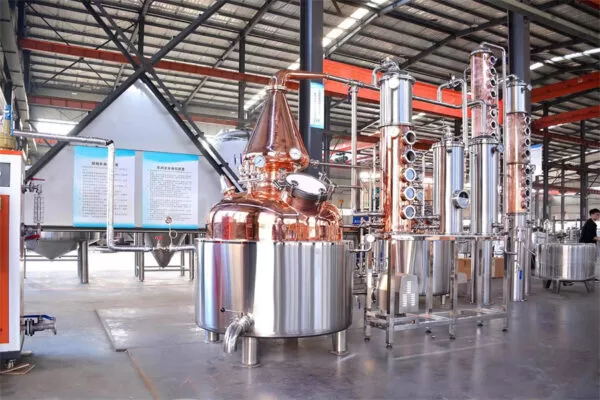
Il più comunemente usato attrezzature per la produzione di birra nelle distillerie comprende:
-
Sistemi di birrificazione in acciaio inox
-
Mash tuns e tini di filtraggio
-
Vasche di fermentazione
-
Alambicchi a vaso e alambicchi a reflusso
-
Bollitori e fonti di riscaldamento
-
Unità di raffreddamento e refrigeratori
-
Valvole sanitarie E sistemi di filtrazione
-
Serbatoi Brite per la carbonatazione e la finitura
Una distilleria moderna deve garantire igiene, automazione dei processi ed efficienza energetica. Ecco perché molti impianti professionali preferiscono Acciaio inossidabile 304 facile da pulire, resistente alla corrosione e conforme agli standard alimentari. Di fascia alta attrezzature per la produzione della birra è spesso progettato per servire un duplice scopo, supportando sia produzione di birra artigianale E distillazione processi con flessibilità.
Quali sono i componenti principali di un moderno sistema di produzione di birra?
Un completo sistema di birrificazione è costituito da diversi componenti principali che funzionano insieme per trasformare il grano in birra. Per le distillerie che producono anche liquori, questo sistema funge spesso da prima fase della produzione di alcolici. processo di distillazione.
| Componente | Funzione |
|---|---|
| Tunnel di ammostamento | Converte il malto e l'acqua in zuccheri fermentabili (mash) |
| Bollitore | Fa bollire il mosto e aggiunge luppolo o altri ingredienti aromatizzanti. |
| Fermentatore | Ospita l'attività del lievito per convertire gli zuccheri in alcool |
| Scambiatore di calore | Raffredda rapidamente il mosto prima dell'inizio della fermentazione |
| Refrigeratore a glicole | Mantiene le basse temperature durante la fermentazione |
| Pannello di controllo | Regola la temperatura, il flusso della pompa e i timer dei batch |
Questa configurazione viene spesso definita come birreriaed è fondamentale per il funzionamento di qualsiasi birreria o distilleria artigianale. It’s not just the tank count that matters—efficiency, heat transfer speed, and the ability to integrate with attrezzature per la distillazione sono essenziali per la scalabilità a lungo termine.
Per coloro che si dedicano alla produzione di birra e liquori, è necessario aggiungere altri componenti, come ad esempio fotogrammi, colonne di distillazione, e unità di filtrazione sono integrati nel progetto per passare da produzione di birra a distillazione senza perdita di qualità o di resa del prodotto.
Come funziona l'impianto di distillazione in un birrificio?
Nelle operazioni ibride, attrezzature per la distillazione completa il sistema di birrificazione consentendo la conversione della birra fermentata in distillati. Questa configurazione crossover è sempre più popolare tra birrifici artigianali E distillerie di piccoli lotti che vogliono espandere le loro linee di prodotti.
I tipi più comuni di apparecchiature di distillazione utilizzate sono:
-
Alambicchi di pentole - ottimo per liquori saporiti come il whisky o il rum
-
Fotogrammi della colonna - utilizzato per gli alcolici più puliti, come la vodka
-
Alambicchi da reflusso - permettono la separazione controllata dell'alcool e la purezza del vapore
-
Air Still Pro - adatto a produzioni di piccole dimensioni e di livello base
-
Kit di distillazione - sistemi modulari utilizzati per i test o per la distillazione domestica
In un birrificio che si occupa anche di distillazione, lievito dal fermentazione rimane attivo nel mash, che viene poi trasferito in una ancora. Il distillatore controlla accuratamente il processo di riscaldamento, consentendo all'alcol di vaporizzare e passare attraverso il colonna, dove viene condensato e raccolto come distillato.
Questo sistema consente di:
-
Uso efficiente di produzione di birra e distillazione patrimonio
-
Controllo completo del sapore in piccolo lotto spiriti
-
Migliore ROI grazie al riutilizzo dell'infrastruttura di fermentazione
-
La produzione di whisky, chiaro di lunao altri alcolici personalizzati
Qual è la differenza tra la produzione di birra e la distillazione?
Anche se entrambi i processi prevedono la trasformazione di ingredienti grezzi in alcol, produzione di birra E distillazione sono fondamentalmente diversi per finalità, metodi e risultati. La comprensione di questa distinzione è essenziale per chiunque gestisca una struttura ibrida.
Birra
-
Converte gli zuccheri del malto in alcol attraverso fermentazione
-
Si ottengono bevande come la birra, a basso contenuto di alcol (in genere 4-8%).
-
Utilizza attrezzature quali mash tuns, fermentatori, bollitori, e refrigeratori
-
Richiede una precisa Gestione del lievito, controllo della temperatura e sanificazione
Distillazione
-
Preleva il liquido fermentato (noto come "lavaggio" o "birra") e separa l'alcol tramite calore e condensazione.
-
Risultati in alcolici a più alta gradazione come whisky, vodka, o chiaro di luna
-
Si affida a fotogrammi, colonne di riflusso, e condensatori
-
Spesso comporta l'invecchiamento (ad esempio, in botti di rovere) per lo sviluppo del sapore
Mentre la produzione di birra si basa sull'equilibrio degli ingredienti, la distillazione si occupa di affinare la purezza e la forza. Molti impianti moderni svolgono entrambe le attività utilizzando sistemi modulari che consentono di passare da una modalità di produzione all'altra.
Quali sono i materiali migliori per le apparecchiature della distilleria di birra?
La scelta del materiale gioca un ruolo fondamentale sia per l'igiene che per le prestazioni. I due materiali più comuni utilizzati nei sistemi professionali di produzione di birra e distillazione sono acciaio inox E rame.
| Materiale | Vantaggi | Applicazioni |
|---|---|---|
| Acciaio inox | Durevole, igienico, resistente alla corrosione | Serbatoi per la produzione di birra, fermentatori e refrigeratori |
| Rame | Eccellente conducibilità termica, rimuove lo zolfo | Alambicchi, percorsi del vapore, condensatori |
| Vetro/plastica | Raro nell'uso professionale; usato in distillazione domestica | Kit di base, configurazioni di prova |
La maggior parte dei moderni attrezzature per la produzione di birra in acciaio inox è fatto di Acciaio inossidabile 304che offre l'equilibrio ideale tra forza, resistenza alla corrosione e certificazione alimentare. Nella distillazione, alambicchi in rame sono spesso utilizzati in combinazione con serbatoi inossidabili per sfruttare il meglio di entrambi i materiali.
Per le strutture che danno priorità alla bassa manutenzione, alla conformità e alla scalabilità, la soluzione completa sistemi in acciaio inox sono tipicamente l'investimento preferito a lungo termine.
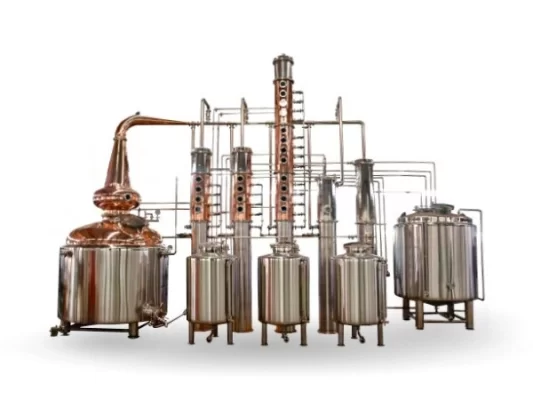
Come scegliere l'attrezzatura giusta per il vostro birrificio o distilleria
La scelta dell'attrezzatura giusta va ben oltre la selezione delle dimensioni dei serbatoi o dei tipi di alambicchi. Un investimento di successo tiene conto degli obiettivi di produzione, dei vincoli di spazio, della varietà degli spiriti e dei requisiti normativi locali.
Vediamo un esempio di scenario:
Un piccolo birrificio urbano che produce lotti da 10 bbl vuole introdurre una whisky artigianale linea. Installano un Alambicco in rame da 150 galloni con una piastra a 3 piastre colonna di riflussocondividendo il raffreddamento a glicole e il pannello di controllo con la sala cottura esistente. Questa integrazione consente di risparmiare 30% sui costi di installazione e di passare in modo flessibile da un impianto all'altro. produzione di birra E distillazione senza espandere la propria impronta.
Considerazioni chiave per la selezione:
-
Volume per lotto: 100, 150, 300 o 500 galloni
-
Tipo di spirito: Il whisky ha bisogno di alambicchi a vaso; la vodka preferisce le colonne di riflusso.
-
Metodo di riscaldamento: Elettrico, a vapore o a gas
-
Automazione: Manuale vs. semiautomatico vs. PLC touchscreen
-
Pulizia: Sia che abbiate bisogno di serbatoi pronti per il CIP e di sistemi di valvole sanitarie
Collaborando con un esperto fornitore che comprende attrezzature per la produzione di birra artigianale e sistemi di distillazione, si evitano costose riprogettazioni e si ottiene un supporto per le certificazioni, la pianificazione del layout e gli aggiornamenti futuri.
Quali sono i vantaggi dell'acciaio inossidabile nella produzione di birra e nella distillazione?
L'acciaio inossidabile è il materiale preferito per le moderne apparecchiature per la produzione di birra e la distillazione, grazie alla sua resistenza, alla sanificazione e alle prestazioni in un'ampia gamma di temperature e processi.
Perché l'acciaio inossidabile è essenziale:
-
Igienico: La sua superficie non porosa resiste all'accumulo di microbi, rendendo la pulizia semplice ed efficace.
-
Durevole: Resiste a ripetuti cicli di riscaldamento e raffreddamento senza deformarsi o incrinarsi.
-
Conforme: Soddisfa gli standard sanitari per la lavorazione di alimenti e bevande.
-
Resistente alla corrosione: Adatto agli ambienti acidi che si creano durante fermentazione e distillazione.
La maggior parte attrezzature per la produzione della birra E attrezzature per la distillazione è fatto di Acciaio inossidabile 304che offre un equilibrio ideale tra costo, resistenza alla corrosione e saldabilità. Per le applicazioni a più alta resistenza o corrosive, alcuni sistemi utilizzano Acciaio inossidabile 316-Anche se questo è più comune nei sistemi di grado farmaceutico.
È importante, serbatoi in acciaio inox, i bollitori e i sistemi di tubazioni supportano l'integrazione con i sistemi CIP (Clean-in-Place) e valvola sanitaria reti, riducendo il lavoro manuale e migliorando l'uniformità di produzione di birra E distillazione ambienti.
Che ruolo ha la fermentazione nella distillazione della birra in alcolici?
Prima di essere distillato, qualsiasi liquido deve essere fermentato. Il processo di fermentazione è il luogo in cui gli zuccheri dei cereali maltati vengono convertiti in alcol da lievitoformando il liquido di base, comunemente chiamato "birra" o "lavaggio", che viene successivamente inviato alla ancora.
Panoramica sulla fermentazione:
-
Ammassamento converte gli amidi in zuccheri fermentabili
-
Il mosto viene raffreddato e trasferito in un fermentatore
-
Lievito e inizia a convertire lo zucchero in etanolo e CO₂.
-
Dopo alcuni giorni, la fermentazione produce un liquido con 6-10% di alcol.
-
Questo liquido viene poi riscaldato in un vaso ancora o colonna ancora per la distillazione
In un solo per la produzione di birra il prodotto viene filtrato e gassato. In distillazioneIl vino viene ulteriormente lavorato per estrarre e purificare l'alcol. Il controllo della temperatura, la selezione del ceppo di lievito e la durata della fermentazione influiscono sul risultato finale. distillatosapore, la resa e la gradazione alcolica.
La fermentazione non è solo il ponte tra la produzione di birra e la distillazione, ma definisce il carattere di base dei vostri distillati. Una fase di fermentazione mal gestita si traduce in distillati deboli o difettosi, a prescindere da quanto sia avanzata la vostra sistema di distillazione è.
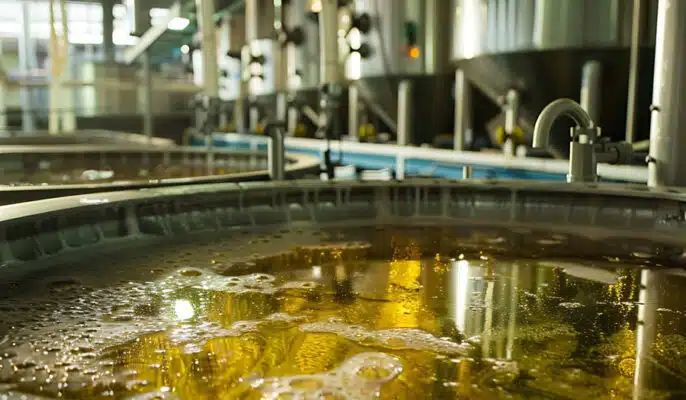
Come si espandono i birrifici artigianali nella distillazione?
Molti birrifici artigianali cercano di ampliare il loro portafoglio aggiungendo alcolici come whisky, vodka, o gin alle loro offerte. Questa transizione comporta in genere l'installazione di ulteriori attrezzature per la distillazione e la riconfigurazione di una parte della sala cottura per un doppio uso.
Invece di ricostruire da zero, i produttori di birra spesso aggiornano i loro sistemi attuali con:
-
Alambicchi modulari con riscaldamento comune a vapore o elettrico
-
Colonne di riflusso per produrre alcolici ad alta gradazione
-
Separato fermentatori per il lavaggio contro la birra
-
Un dedicato filtrazione E raffreddamento linea per prodotti distillati
-
Consulenza normativa per le licenze e la conformità degli alcolici
Esempio di caso:
Un birrificio da 5.000 l utilizza un alambicco da 300 galloni con un colonna di riflusso e lo integra con le loro attuali refrigerazione del glicole loop. Si assegnano tre fermentatori per la birra e uno per il lavaggio. Gli alcolici sono marchiati con una sotto-etichetta, attirando un nuovo segmento di clienti e aumentando i margini di profitto.
Con il giusto attrezzature per la produzione di birra e la distillazioneI birrifici possono testare il mercato degli alcolici con un'interruzione minima. La domanda di bevanda artigianale La diversità continua a crescere e i birrifici ibridi possono soddisfare questa domanda in modo efficiente.
Cosa rende un buon fornitore di attrezzature per la produzione di birra e la distillazione?
Scegliere il giusto produttore di attrezzature o fornitore può fare la differenza per la vostra azienda. Al di là dell'hardware, si tratta di acquistare esperienza, opzioni di personalizzazione e assistenza a lungo termine.
Qualità chiave da ricercare:
-
Soluzioni chiavi in mano: Dal layout del birrificio all'installazione e alla formazione
-
Personalizzazione: Capacità di personalizzare le imbarcazioni, sistemi di valvolee l'automazione
-
Certificazioni globali: CE, UL, conformità 3A, ecc.
-
Assistenza post-vendita: Accesso a parti di ricambio, aggiornamenti e diagnostica a distanza
-
Esperienza: Consegna comprovata a birrifici e distillerie artigianali globalmente
Micet è specializzata nella fornitura di soluzioni personalizzate per startup, produttori in crescita e aziende consolidate. Se avete bisogno di nuovo e usato un sistema a doppio uso o un sistema completo. produzione di birra commerciale e impianti di distillazione, aiutiamo a progettare e fornire sistemi affidabili e certificati, in grado di adattarsi alle vostre esigenze.
Domande frequenti
Qual è la differenza tra la produzione di birra e la distillazione di alcolici?
La produzione di birra converte gli zuccheri in alcol attraverso la fermentazione per produrre birra, mentre la distillazione prevede il riscaldamento del liquido fermentato per separare e purificare l'alcol per ottenere bevande a più alta gradazione come il whisky o la vodka.
Quale dimensione di alambicco dovrei utilizzare per la distillazione di piccoli lotti?
Per la produzione di piccoli lotti, Alambicchi da 150 galloni o fotogrammi della colonna sono ideali. Bilanciano la produzione con il controllo del sapore e si integrano bene nei sistemi di microbirrificazione o ibridi.
Posso utilizzare la stessa attrezzatura per la produzione di birra e per la distillazione?
Sì, molti componenti come tunnel di mash, fermentatori, e bollitori possono essere condivisi. Ulteriori attrezzature per la distillazione come fotogrammi e colonne di riflusso vengono aggiunti per la produzione di acquavite.
Qual è il materiale migliore per le apparecchiature di distillazione?
Acciaio inox è ideale per la durata e l'igiene, mentre rame è spesso utilizzato negli alambicchi per migliorare l'aroma dell'acquavite e rimuovere i composti solforati dal vapore.
Quanto è importante il raffreddamento del glicole nel processo?
I sistemi a glicole aiutano a mantenere temperature precise durante fermentazione e sono fondamentali per controllare l'attività del lievito e il raffreddamento post-bollitura.
Qual è il ruolo di uno scambiatore di calore nella produzione di birra?
A scambiatore di calore rapidly cools wort after boiling, preparing it for fermentation. It’s essential for minimizing bacterial contamination and protecting vitalità del lievito.
Punti di forza
-
Attrezzature per la distilleria di birra comprende sistemi di produzione di birra, alambicchi, fermentatori, componenti di filtrazione e refrigerazione.
-
Comprendere la differenza tra produzione di birra E distillazione aiuta a progettare un'efficiente struttura a doppia funzione.
-
Acciaio inox offre durata, igiene e conformità per la produzione di birra e alcolici.
-
Fermentazione è l'anello critico tra la produzione di birra e la distillazione; la sua gestione definisce la qualità del prodotto.
-
Collaborare con le persone giuste fornitore garantisce sistemi scalabili, conformi alle normative e di lunga durata.
Pensiero finale
Whether you’re a craft brewer looking to add small batch spirits, a distillery scaling into beer production, or a new venture seeking reliable brewing and attrezzature per la distillazioneLa scelta del sistema ha un impatto su tutto, dal sapore alla conformità.
Micet fornisce ai clienti globali di alta qualità, birrificazione personalizzabile e sistemi di distillazionecostruiti con precisione artigianale e supportati da competenze tecniche. Lasciate che vi aiutiamo a progettare un attrezzature per birreria e distilleria soluzione che cresce con le vostre ambizioni.

